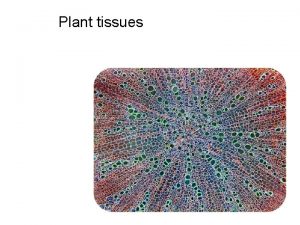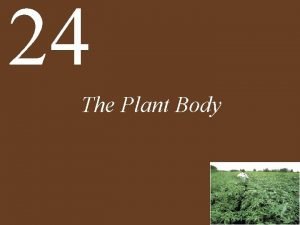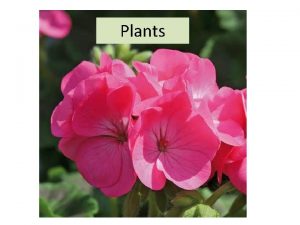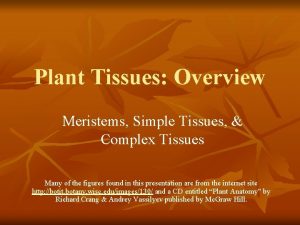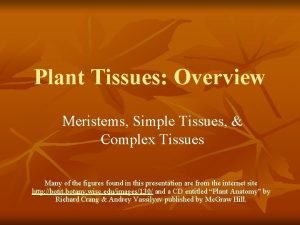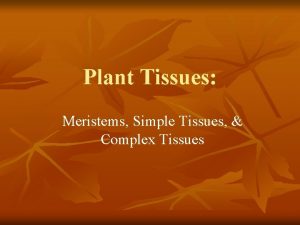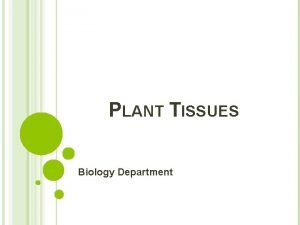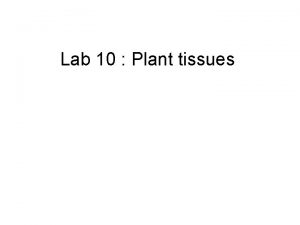Plant Tissues and Meristems Protects against physicalpathogenic agents









- Slides: 9

Plant Tissues and Meristems Protects against physical/pathogenic agents, prevents water loss All derived from meristematic tissue Divide: 1 stem cell/1 differentiated cell Continually renewed Thin walled cells Functions: storage, photosynthesis, support, secretion Xylem/phloem: carryout long distance conduction (water, minerals, nutrients), provide support

Plant Growth Plants Continual pattern of growth Animals/leaves Growth ceases at a point Death: Annuals (die yearly) Biennials (2 yr cycle) Perennials (die due to infection, environmental factors)

Meristems Grow tall to increase exposure to light, CO 2 1⁰ meristem Herbaceous, nonwoody plants Extends into soil 2⁰ meristem: increase thickness of stem/root Woody plants Produces cork cells of outer bark Produces 2⁰ vascular tissue

Plant Hormones Means of communication within plant Affect development and growth: Environmental stimulus (day length/water) Receptor types (detection of factors) Genetic makeup Hormones

Process of Hormone signaling Specific cells have specific receptors Receive environmental stimulus Protein receptor activated Initiates metabolic pathway Produces hormone (produced throughout plant) Travel via phloem Target cell affects specific area of plant

Auxin and Phototropism Tropisms: growth/movement to directional external stimuli Positive - towards Negative - away Phototropism: response to light Stems (+) Roots (-) Increases flexibility of cell walls in young plants Auxin found in 1⁰ apex) Redistributed to shaded side Creates curvature towards light

Auxin and Phototropism 1. Auxin produced in all cells in stem on light side (auxin efflux) 2. Auxin influx: pump action into nuclei of cells on dark side 3. Auxin and receptor form complex – activates H+ pump 4. H+ move into cell wall 5. Causes p. H drop creating H-bonds between cellulose fibers – breaking cell wall Causes elongation

Auxin involved with: – Stimulation of cell division in meristematic tissue – Xylem/phloem differentiation – Development of lateral roots – Suppress lateral bud growth when found in apical bud – Stimulate growth of flower parts – Fruit production without pollination Changes in gene expression

Micropropogation Culture cells from shoot apex Nutrient agar with growth hormones Uses: • Rare/endangered plants maintained • Develop virus-free strains • Alter genome to create beneficial plants Problems: • Extremely expensive • Difficult to maintain pathogen free environment






